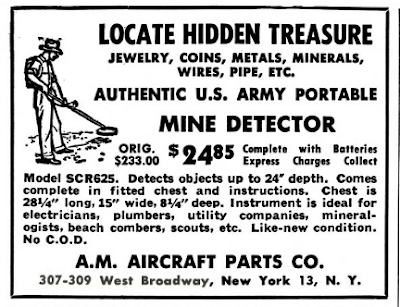 |
| The site of the cornice is marked by a blank scar. |
In the 1870's the small building at No. 241 South Fifth Avenue was home to the candy factory of Franchi & Lertora, makers of "marshmallow drops." It and the building next door at No. 239 were sold at auction on February 19, 1890; but they would survive another two years.
On June 10, 1892 architect Douglas Smyth filed plans for a seven-story "brick and stone factory" on the site for Alonzo Kimball. He placed the construction costs at $45,000; or about $1.28 million today.
Born in Wakefield, New Hampshire, in 1828, Kimball became associated with the Singer Sewing Machine Company in 1857. He traveled throughout Europe for the firm until 1874 and two years invented and began manufacturing "pin-tickets."
 |
| Alonzo Kimball - Dry Goods Economist, December 9, 1916 (copyright expired) |
Smyth's design was a blend of styles. The two-story limestone base featured massive banded piers, the central one capped by a colossal Ionic capital. The four-story midsection, sandwiched between a stone and a copper cornice, was divided by three brick piers. The arched windows of the third floor featured fan lights with metal spokes. The grouped openings of the top floor took the form of two large arches.
Alonzo Kimball was still perfecting his business at the time of the Kimball Building's construction. And so the building was initially home to Johnson & Morris, steam heating, hot water and ventilating contractors, who moved in in April 1893. The firm designed and installed systems capable of handling the heating needs of large structures. On May 26, 1894 The Metal Worker shared a testimonial received by engineer George W. Plastow when he was given an order "for a considerable heating plant." The return customer said:
More than 20 years ago your house heated a building for me, and the plans has been so free from annoyance and excellent in service that I remembered your house when I wanted this building heated.
In 1896 South Fifth Avenue was renamed West Broadway. (it was a common-sense move, since a year earlier College Place had been extended, joining South Fifth Avenue to West Broadway and creating a confusion of three names within a span of mere blocks.) The Kimball Building received the new address of Nos. 307-309 West Broadway.
Johnson & Morris remained in the building through 1897. And then the following year A. Kimball Co. was incorporated by Kimball, his son-in-law Melville Asbury Marsh, and Arthur G. Thompson. The firm moved into the building that bore its name.
Following the turn of the century the aging Kimball seems to have slowed down and he essentially turned over management of the firm to Marsh and Thompson.
The success of A. Kimball Co. was evidenced in Thompson's luxurious lifestyle. In 1906 he placed his 76-acre country estate on the Long Island Sound for sale. His ad described a "spacious mansion, $25,000 barn, $30,000 stable, house for farm hands, 165-foot grapery, orchards, two acre garden, gas house, ice house, &c." He was asking $150,000 for the property--more than $4.3 million today.
Thompson's wife, Angelica, attempted to obtain a divorce in April 1914. The Sun reported "Mr. and Mrs. Thompson have been living apart for some months." Angelica charged her husband with "improper acts." She was disappointed when the judge refused to grant the divorce. He found no proof of the alleged acts and suspected "collusion" between the couple to obtain the divorce. Getting out of a marriage in 1914 seems to have been more challenging than today.
 |
| The Clothier and Furnisher, January 1919 (copyright expired) |
Alonzo Kimball died "of paralysis" (most likely a stroke) in his home at No. 727 Park Avenue in December 1916. Melville Marsh was made president of the firm and within the year Thompson was out. Marsh's wife, Mary, (who, incidentally, was Alonzo Kimball's only daughter), was made secretary and director of the firm.
Melville and Mary had two daughters and a son, Alonzo. Alonzo entered Harvard in 1916 and joined the firm following his graduation. The family's summer residence was at Sound Beach, Connecticut, and it was there on August 16, 1929 that Melville Marsh died of a heart attack at the age of 73.
The A. Kimball Co. remained in the West Broadway building until August 1957 when it was sold to an investor. The Kimball Building became home to a variety of small businesses like A. M. Aircraft Parts Co., here by 1959. The firm resold surplus military equipment.
 |
| Popular Mechanics magazine, June 1960 |
A conversion completed in 1977 resulted in one apartment per floor above the ground floor. The Department of Buildings restricted their use to "joint living-work quarters for Artists."
photographs by the author

.png)
No comments:
Post a Comment